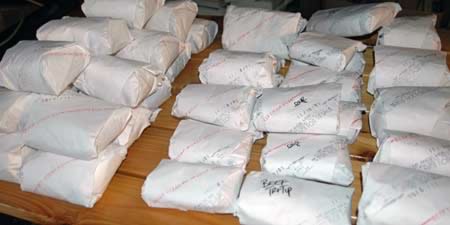How to buy a side of beef
Kris and I grow our own berries. We harvest walnuts from a tree in the yard, and glean hazelnuts from a friend’s orchard. We keep fruit trees and a vegetable garden. For city folk, we try to grow as much of our own food as possible. But one thing we cannot grow is our own meat. We’ve discovered the next best thing, though: we buy beef in bulk from a local rancher. Every year, we pool our money with three other couples to purchase an animal when it’s ready to be slaughtered. In early December, we bring home about one hundred pounds of meat.

Buying beef in bulk can be an excellent deal, but not for everyone. Buying a side of beef is a good choice if you like to cook, you eat a lot of meat, you have storage space, and quality is important to you.
The advantages of buying in bulk include:
- Superior quality meat — Grocery-store meat is aged 5-7 days. Meat purchased from a local source is generally aged 14-21 days. (Note that not everyone prefers the taste of aged meat.)
- Uniformity of product — Commercial ground beef is often produced using meat from dozens of animals. When you buy a side, the ground beef is produced from a single animal, which minimizes the risk of contamination.
- Support of local business — I like the fact that buying beef from a local rancher allows me to support him, and to support the meat packer that processes the animal.
- Constant costing — Because you’re buying your meat all at once, it’s easy to budget your costs for an extended period.
- Fewer trips to the grocery store — Plus you no longer have to plan your meals around what’s on sale.
- Meat is packed for freezing — If you buy large quantities at the grocery store, you need to repack the meat to freeze it. When purchase a side of beef, this is done for you.
- Excellent pricing — Buying a side of beef can save you money over regular grocery store prices. However, it is possible to save more at the grocery store by watching for sales.
The advantages of buying beef at the supermarket are:
- Less storage space required — When you buy your meat in small quantities, as you need it, you don’t need a spare freezer.
- You can obtain the best possible pricing — If you stock up on your favorite cuts during sales, you can obtain the best possible pricing.
- You can pick your cuts of meat — If you only use certain cuts of meat, a grocery store is your best option because you can select the cuts you like. When you buy in bulk, you receive a variety of cuts, some of which you may not use.
- Smaller investment — Purchasing even a quarter of an animal costs about $300. You can go to the grocery store and pick up a pound of hamburger for $2.50 on special.
- Less work — To buy meat at your grocery store, you simply select it from the refrigerator case. To buy a side of beef, you need to find a source, perhaps find other beef-lovers to split the cost, transport the meat, and find storage space.
The advantages of purchasing a side of beef outweigh the disadvantages for me. You may disagree.
How do you find a source for bulk beef? Ask around. Mention to friends that you’re looking. Talk to your local butcher. Contact nearby cattle farms. It shouldn’t be difficult to find a good source.
 Most places allow customers to purchase meat in a variety of ways. You can buy a whole cow. You can buy a side (which is half a cow). You can buy a quarter. Or you can simply purchase wholesale cuts. Around here, it is common for several families to pool resources to purchase a single animal. For example, we divide the costs with three other couples, and when the beef is ready, we each get a quarter of the meat.
Most places allow customers to purchase meat in a variety of ways. You can buy a whole cow. You can buy a side (which is half a cow). You can buy a quarter. Or you can simply purchase wholesale cuts. Around here, it is common for several families to pool resources to purchase a single animal. For example, we divide the costs with three other couples, and when the beef is ready, we each get a quarter of the meat.
This year, our cow was slaughtered on October 18th. It hung for two weeks, and then was cut and wrapped. The cow dressed out at 560 pounds, or 140 pounds per couple. The meat cost $1.65/lb. The cut and wrap charge was $0.40/lb, and there was a $40 kill fee. (All costs apply to hanging weight, which is different than the actual weight of the meat you take home.) Basically, we paid $300 for our share of the meat, which amounted to roughly 83 pounds divided as follows:
- 21 packages of ground beef totaling 47 pounds, 14.3 ounces of meat
- 5 roasts totaling 12 pounds, 4.1 ounces of meat
- 15 packages of steak totaling 18 pounds, 14.8 ounces of meat
- 2 miscellaneous cuts totaling 3 pounds, 15.3 ounces of meat
Our net cost was $3.61 per pound. Compare that to the prices listed in this week’s circulars:
Safeway
- London Broil $2.49/lb (regularly $4.59/lb)
- Sirloin Steak $4.49/lb
- Chuck Cross Rib Roast $3.99/lb
- Tri-Tip Roast $5.99/lb
- Extra Lean (7% fat) Ground Beef $3.49/lb (regularly $3.99/lb)
- Boneless Rib Roast $8.99/lb (regularly $9.99/lb)
Albertson’s
- Sirloin Steak $2.99/lb (or $4.99/lb for the high-quality stuff)
- Bone-In Rib Roast $5.99/lb (or $7.99/lb for the high-quality stuff)
In this case, shopping at the supermarket would be more expensive, but not by much. If you watch for sales, supermarket beef will cost even less. Buying in bulk gives you better quality meat, though. It also comforts me to believe that the beef I eat is not mass-produced feedlot stuff. For more information, consult these resources:
- Oklahoma Extension Service: Buying beef for home freezers and Buying beef in large quantities [PDFs] (these are excellent short guides to the subject)
- Minnesota Extension Service: Aging Beef (for information on how and why beef is aged)
- Michael Pollan: The New York Times Magazine: Power Steer (in which the author purchases a steer and follows it as it’s raised and then butchered)
- The Dollar Stretcher: Side of beef savings (commenters note that buying a side isn’t necessarily cheaper than buying at the grocery store)
- Conscious Choice: Grass-fed animal products: Good for animals, people, and the planet (an argument for grass-fed beef)
- Ask the Meatman: Yield on beef caracasses — an excellent run-down of the yield of various cuts from a typical animal.
Finally, a short cautionary tale. Some friends bought a side of beef in late July. They loaded it into the upright freezer in their garage, but accidentally left the door ajar. When they returned to the garage, they were alarmed to find the beef thawing in the heat. I think they were able to salvage most of it. It’s a scary thing, though, to think you’ve just lost hundreds of dollars of meat!
Become A Money Boss And Join 15,000 Others
Subscribe to the GRS Insider (FREE) and we’ll give you a copy of the Money Boss Manifesto (also FREE)
